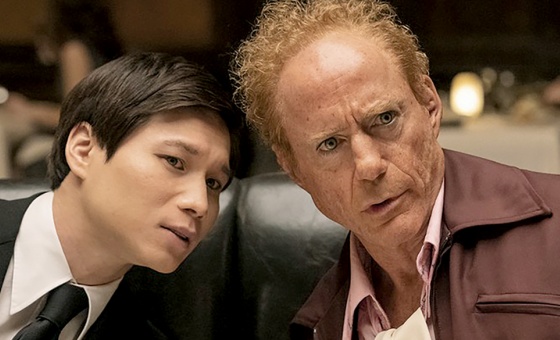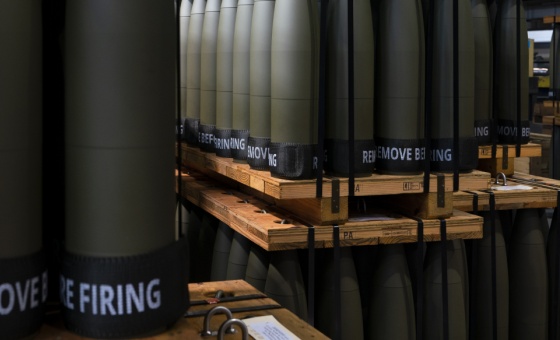This is the last article you can read this month
You can read more article this month
You can read more articles this month
Sorry your limit is up for this month
Reset on:
Please help support the Morning Star by subscribing here
EUROPE’S well-nigh zero interest rates are being used to further hollow-out its major cities as those with capital in Munich, Berlin, Paris, London and Amsterdam are borrowing at no cost and buying up housing used as tourist rentals by the likes of Airbnb and others.
Along with this trend, steadily rising rents mean that the working and middle classes can no longer afford to live in the cities and must commute to work from far outside.
This is a global problem – rents in California are now so high that in order to find more affordable housing people are leaving not just its cities but the state itself.
It doesn’t have to be this way. One of the cities that is still liveable in for ordinary people is Vienna. In its tourist centre, rents are increasing but the affordable housing just on the periphery and an extremely efficient public transport system makes commuting easy.
The model for this type of urban planning dates back to the period from 1919 to 1934, during the time of “Red Vienna.” Then the socialists and later the social democrats were in power and the major project was the construction of not just public housing but also complexes such as Karl-Marx-Hof, still standing, that were cultural centres as well.
The social theorist Karl Polanyi described the period as one where “a highly developed industrial working class … achieved a level never reached before by the masses of people in any industrial society.”
In 1918, after the disappointment and destruction of WWI and the fall of the Habsburg dynasty, Austrians won universal suffrage, with women for the first time allowed to vote.
The government elected by this new constituency was socialist and it made the eight-hour working day legally binding, introduced unemployment insurance and began to address the city’s housing crisis, where the poor and many workers lived in unheated, TB-infected and overcrowded shacks.
Building began in earnest in 1925 and, by 1933, 64,000 apartments had been constructed in complexes that were also spacious living facilities boasting gyms, swimming pools, kindergartens and green courtyards.
By the end of this period, a tenth of all residents now lived in low-rent housing, costing in some cases only four per cent of their income. Dubbed palaces of the proletariat, the most magnificent was the Karl-Marx-Hof, whose 1,300 apartment complex was known as the Workers’ Versailles.
Funding came from a combination of a housing tax, a luxury tax and federal funds and this degree of public housing also discouraged speculation.
The infrastructure for the building project, including an electrified railway to transport workers easily across the city, was laid during the administration of the infamous Karl Lueger, whose concept of modernisation also included a strong anti-semitic element.
The most famous architect of the period during the construction of the ring surrounding the inner city was Otto Wagner. After building many of the bourgeois homes, he turned his attention to subway construction and to a plan for green suburbs with workers’ homes surrounded by parks.
The epitome of this housing development, the Karl-Marx-Hof, was designed by Karl Ehn, a student of Wagner’s. The structure stretches almost three-quarters of a mile and included gardens, a children’s school, large laundries and libraries.
A gigantic pool at Amalienbad in a nearby district was considered “a temple of hygiene” with its glass roof, Roman bath and showers with clean water, a first for workers.
The twin ideas of space and education was a guiding principle, so that a former tenement kitchen with a woman ironing on what was also the cutting board for cooking, all the while tending to children at her feet, was replaced by a spacious kitchen with a large dining table that also functioned as a study table for the working-class mother now getting an education.
Then, first the socialists and later the social democrats lost power. What ensued were pitched battles in the street in what is referred to as the Austrian civil war.
The most well-known of these was at the Karl-Marx-Hof, where workers retreated into their housing complex as both the last bastion and the focal point of their achievement.
They were shelled and bombarded by a combination of the Austrian army, police and fascist militias heralding the beginning of what was called Austrofascism, which ran parallel to Hitler’s movement in Germany. The date of the battle is commemorated by the naming of the plaza as February 12 Square.
After the nazi invasion in 1938, the name of the complex was changed. But in 1945 its original name was restored and the reverberations of the period have influenced subsequent building development.
There were four different views for reconstructing the city after the war, advanced by each of the occupying powers. The Russians proposed monumental state power-station construction while the French, following the precepts of architect and urban planner Le Corbusier, proposed vertical modernist housing.
The US wanted to build luxury hotels with prefabricated housing for everyone else. But it was the British Labour Party model of a green garden movement, stressing the need for workers to live apart from the congestion and pollution of factories, that the Viennese favoured.
The legacy of Red Vienna has bequeathed a suburban workers’ space to the city that is still both green and affordable. Hopefully, it will be able to withstand new onslaughts of speculation.
Dennis Broe is a culture critic whose latest work is Birth of the Binge: Serial TV and The End of Leisure and whose art and architecture criticism appears on Arts Express on the Pacifica Network in the US, on Breaking Glass on Art District Radio in Paris and at Culture Matters and People’s World.









